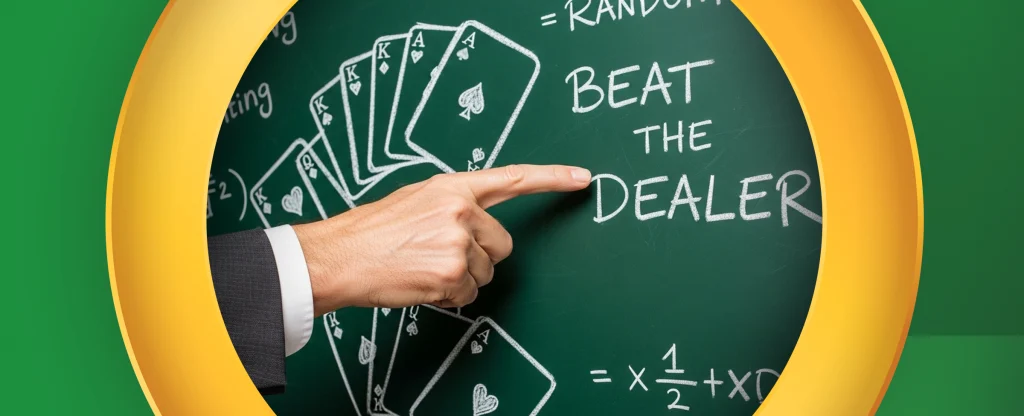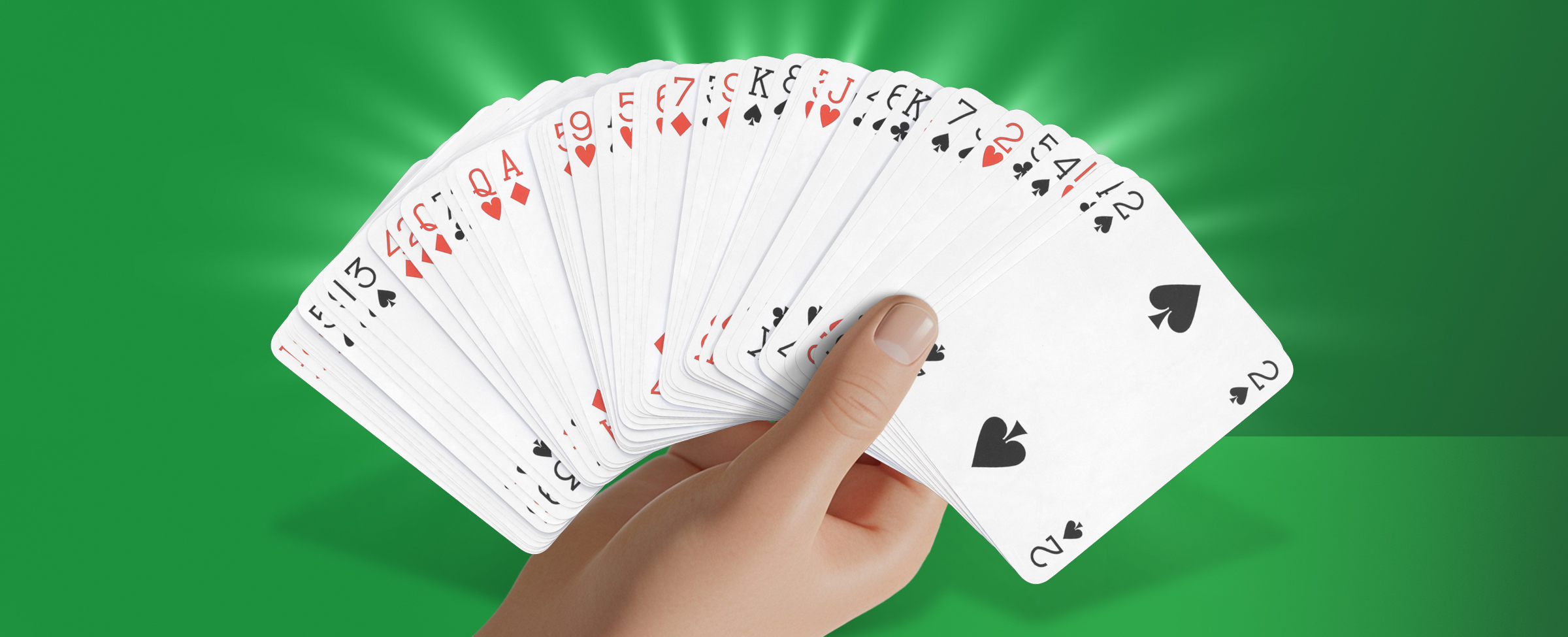Card counting in blackjack is considered a strategy by some that has been closely considered novice players as well as seasoned professional gamblers. While it’s often a feature in tv shows and films and written about in books, understanding its legality and effectiveness is important for anyone considering its use. Here at Joe Fortune we’ve pulled together a few points to help you learn a bit more about it.
What Is Card Counting?
Card counting is a technique used in blackjack to determine whether the next hand is likely to give an advantage to one, or all, of the players or the dealer. By keeping a mental tally of high and low cards dealt, players can then change their betting and playing strategies accordingly. The primary goal is to bet more when the deck is rich in high cards, which should then increase the player’s chances of winning and beating the house.
How to Count Cards
Straight up, counting cards does not require complex mathematics or a degree in numbers but it does demand concentration and practice. The most common system is the Hi-Lo strategy, where:
- Cards 2 to 6 are assigned a value of +1.
- Cards 7 to 9 are neutral i.e. 0.
- Cards 10 and all face cards, and Aces are assigned a value of -1.
As cards are dealt, players maintain what is referred to as a running count by adding or subtracting based on the cards shown. A positive count suggests a deck rich in high cards, while a negative count indicates a deck with more low cards. Players then adjust their bets and playing decisions based on this count.
When Is It Best to Card Count?
Card counting is a strategy that can give players a slight edge in blackjack, but timing and conditions matter a lot. Knowing when it’s most effective can make all the difference. The ideal time to card count is when you’re playing at a live dealer table or in a physicalcasino. Online digital blackjack games use random number generators and reshuffle after every hand, making counting useless. Look for tables where real cards are used, and the deck isn’t shuffled too frequently.
Fewer decks mean better odds for the counter. Single-deck or double-deck blackjack makes tracking the count easier and more accurate. If you’re playing in a game with six or eight decks, your edge becomes much smaller.
Another key factor is deck penetration, how far into the shoe the dealer goes before reshuffling. Ideally, the dealer should reach at least about 75% of the shoe before a reshuffle. The deeper they go, the more reliable your count becomes, and the more confident you can be in adjusting your bets.
It can be best to try to count during quieter periods, like early mornings or weekday afternoons. Fewer players and less attention from floor staff make it easier to concentrate and avoid detection. Counting works best when you can stay focused and under the radar. Wearing sunnies whilst in a casino might be a bit too much as you’re not playing poker and trying to bluff the dealer!
Most importantly, card counting should only be attempted if you’ve practised enough to do it confidently and without obvious changes in your betting patterns or general behaviour. There are plenty of free-to-play games out there where you can test yourself. Or perhaps even see how you go having a few hands with your mates to see if you’re good enough to have a go in a real casino!

Does It Work?
Card counting can provide a slight advantage over the house, but as with so much it’s not a guaranteed way to win. The effectiveness of it depends on a few key factors, in no order:
- The Skill of the Player: Maintaining an accurate count and making optimal decisions based on that count requires practice and discipline.
- Casino Measures: Many casinos have continuous shuffling machines or reshuffle at great frequency to try to hinder counters.
- Deck Penetration: The deeper into the deck the dealer goes before reshuffling, the more accurate the count becomes.
While card counting can shift the odds slightly in the player’s favour, it’s important to note that casinos are very vigilant and may take steps to counteract it.
Can You Tell If Someone Else Is Counting?
Experienced card counters often employ subtle techniques to avoid detection. However, certain behaviours might raise suspicion, here are some to look out for:
- Unusual Playing Decisions: Straying from basic strategy without any clear or obvious reason.
- Inconsistent Betting Patterns: Sudden increases to place a large bet can be seen as a red flag.
- Avoiding Eye Contact: Overly cautious players might draw attention.
Casinos train their staff to observe such behaviours, and players may be asked to leave or even banned from the casino.
How Much of an Edge Does Card Counting Give You?
The advantage gained through card counting is only modest as on average, skilled counters might achieve an edge of somewhere around 1% over the house. While this can be significant over thousands of hands, it’s not a surefire way to win and could well require a decent bankroll to withstand any losing streaks.
Is It Worth It?
Whether card counting is worth pursuing depends on your individual goals, how much time you have and of course your financial resources:
- Risks: Casinos may ban or restrict players suspected of counting cards. Also, the strategy requires a significant amount of practice to execute effectively.
- Skill Development: It offers a mental challenge and can improve a player’s understanding of probability and strategy.
- Potential Profit: While the edge is relatively small, consistent application can lead to profits over time.
For most players who are just wanting to have some fun, the effort and risk may outweigh the potential benefits. However, for those players out there dedicated to mastering the technique, it can be a rewarding endeavour.

Famous Card Counters
Edward O. Thorp
Many consider this bloke as the one who started it all… Edward Thorp was a maths professor who wrote Beat the Dealer back in the 1960s. His book was the first to prove that by using maths playing blackjack you could beat the house with card counting. Thorp didn’t just talk the talk, nope that’s right he walked into casinos and cleaned up before they caught on.
Ken Uston
Ken Uston was a real character who joined blackjack teams in the 1970s and took casinos for a ride using team-based card counting. He was all about disguises, secret signals, and big wins. Uston also went to court to fight for players’ rights, arguing that card counting shouldn’t get you booted from a casino. Look out for his book The Big Player which is still popular today.
The MIT Blackjack Team
This group of brainy students from MIT and Harvard became famous for turning card counting into a full-blown operation. Using signals, spotters, and massive bankrolls, they beat casinos across the States in the 1990s. Their story was later told in the book Bringing Down the House. This was then made into a movie called 21 which is well worth watching if you’re keen to see how card counting worked on a huge scale.
Final Thoughts
Card counting is legal and can give you a small edge in blackjack but just don’t expect miracles. It takes focus, skill, and the patience of a monk. Casinos have plenty of tricks to stop you, so keep your expectations real. It’s more of a mental workout than a get-rich-quick scheme. Edward O. Thorp may have cracked the game with maths, but unless you’re keen on turning your lounge room into a spreadsheet, treat card counting as a challenge and certainly not as a guaranteed winning strategy.
